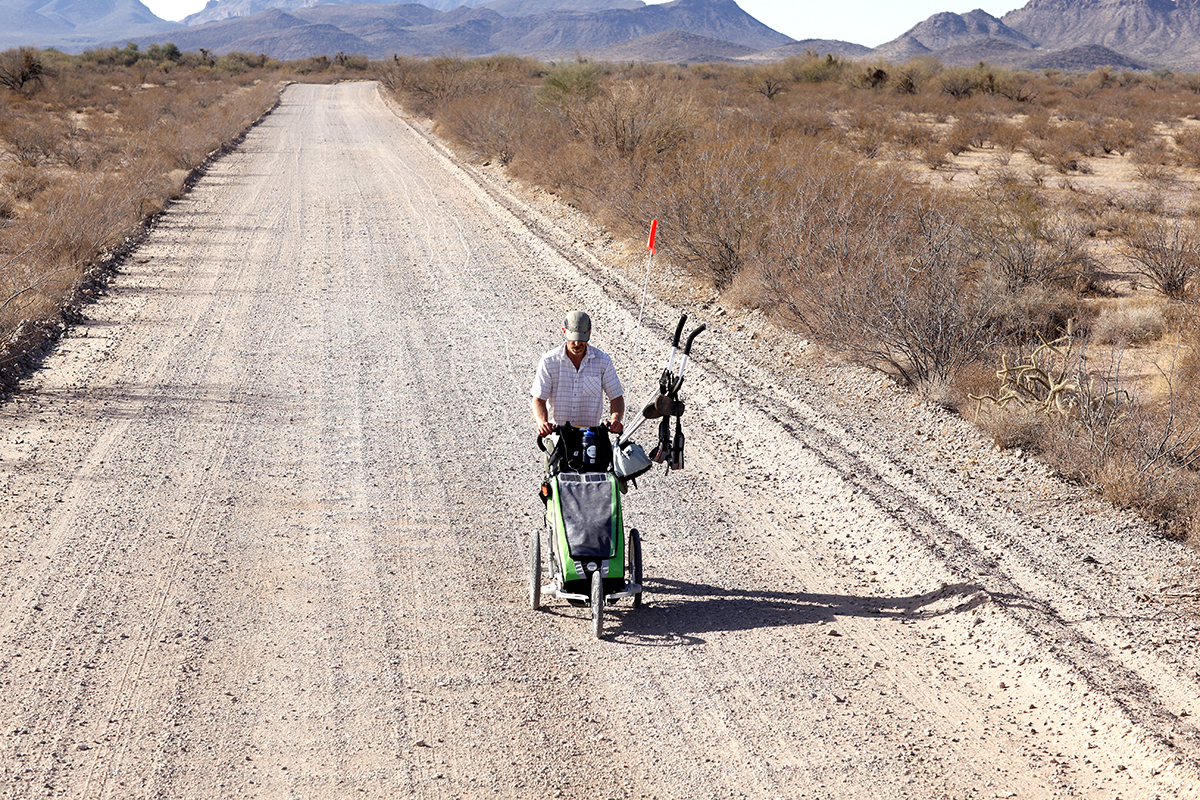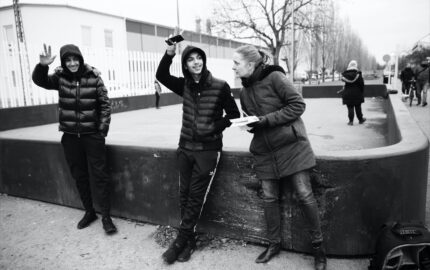
The Offending Art
The Charlie Hebdo murders focused attention on the threat to Western satirists, but political cartoonists around the world are at risk. Some, such as cartoonists from Iran and China, live in exile so they can continue with their political commentary. Their status brings fresh urgency to longstanding questions around the limits of free speech, the role of satire as a form of dissent, and the relationship between political cartooning and journalism.
From the very beginning—the scrolls of maps marked with every police station, hospital, and border patrol outpost; the long discussions about satellite phones and kidnapping insurance; the phone call with my writer, Luke Dittrich, about “The Judge,” a gun a desert wanderer tried to convince him to purchase for protection—“Walking the Border” was an unusual story. We spent months plotting the route and safety and evacuation plans—did you know there’s a missile and bomb testing ground on the Arizona border?—and then Luke set out from San Diego and walked east. He pushed all of his gear and water until his feet bled, and then bled some more. Then we created an 8,000-word narrative about his experience.
Five years later, the story has taken another strange turn. Students at Northeastern University’s School of Journalism developed prototypes to turn it into a video game in which users can control a digital Luke as he rushes past drug smugglers and searches in the dark desert for a place to camp. Others created a crowdsourced version where those who live on the border can contribute their own stories and photos. Then there was the interactive map, where Luke’s walk unfolded in discrete digital chunks, one for each leg of the journey.
These students were participating in StoryLab, an initiative I launched in late 2014 with Jeff Howe, NF ’10, and Dina Kraft, NF ’13, who run Northeastern University’s Media Innovation Program. Our collaboration, which includes a future of narrative blog called Storybench, seemed fated: Jeff and Dina are building a curriculum that will teach a new generation of storytellers how to create impactful journalism using the bleeding-edge digital tools of today.
Meanwhile, at Esquire, where I direct our R+D efforts and edit features, I’ve been focused on finding new ways to both tell and sell stories.
This means experimenting with paywalls and finding innovative ways to give classics from our 81-year print archive new life on phones and tablets. And it also means considering novel ways of presenting Esquire stories, whether in a weekly original podcast series or as a season of animated shorts. Or here, at Northeastern’s Ryder Hall, on a brutally cold January night in Boston, it means working with and learning from the students in StoryLab.
There were just shy of 20 of them, mostly young women, nearly all with deep design and coding backgrounds. Their task over the course of the semester will be to reimagine, rethink, re-create a few Esquire stories for the digital world.
Hands are up, keyboards clicking. I’m telling them about the writing and the editing process, how we construct stories. “How much interaction will we have with your staff?” they want to know. They want our notes and photos and research. They want to be able to sit down with our writers and editors to discuss their stories and how they plan to reinvent them.
They will get all of this. In exchange, we just ask for a window into what the future of narrative journalism could look like.
Five years later, the story has taken another strange turn. Students at Northeastern University’s School of Journalism developed prototypes to turn it into a video game in which users can control a digital Luke as he rushes past drug smugglers and searches in the dark desert for a place to camp. Others created a crowdsourced version where those who live on the border can contribute their own stories and photos. Then there was the interactive map, where Luke’s walk unfolded in discrete digital chunks, one for each leg of the journey.
These students were participating in StoryLab, an initiative I launched in late 2014 with Jeff Howe, NF ’10, and Dina Kraft, NF ’13, who run Northeastern University’s Media Innovation Program. Our collaboration, which includes a future of narrative blog called Storybench, seemed fated: Jeff and Dina are building a curriculum that will teach a new generation of storytellers how to create impactful journalism using the bleeding-edge digital tools of today.
Meanwhile, at Esquire, where I direct our R+D efforts and edit features, I’ve been focused on finding new ways to both tell and sell stories.
This means experimenting with paywalls and finding innovative ways to give classics from our 81-year print archive new life on phones and tablets. And it also means considering novel ways of presenting Esquire stories, whether in a weekly original podcast series or as a season of animated shorts. Or here, at Northeastern’s Ryder Hall, on a brutally cold January night in Boston, it means working with and learning from the students in StoryLab.
There were just shy of 20 of them, mostly young women, nearly all with deep design and coding backgrounds. Their task over the course of the semester will be to reimagine, rethink, re-create a few Esquire stories for the digital world.
Hands are up, keyboards clicking. I’m telling them about the writing and the editing process, how we construct stories. “How much interaction will we have with your staff?” they want to know. They want our notes and photos and research. They want to be able to sit down with our writers and editors to discuss their stories and how they plan to reinvent them.
They will get all of this. In exchange, we just ask for a window into what the future of narrative journalism could look like.



